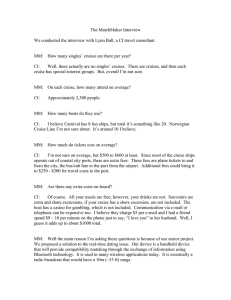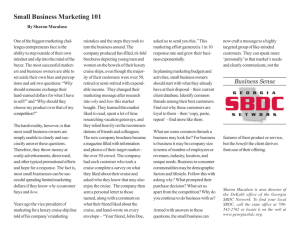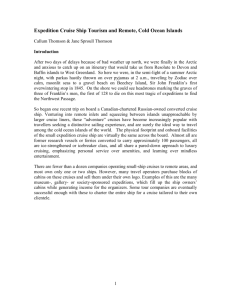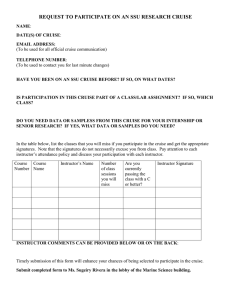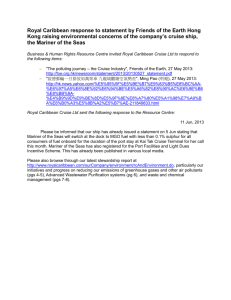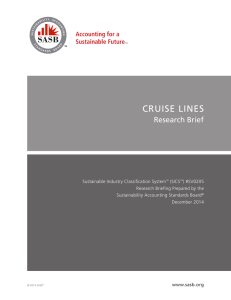Scenario Problem Focused Exercise: Cruise Ship Pollution – an economic problem? 1
advertisement
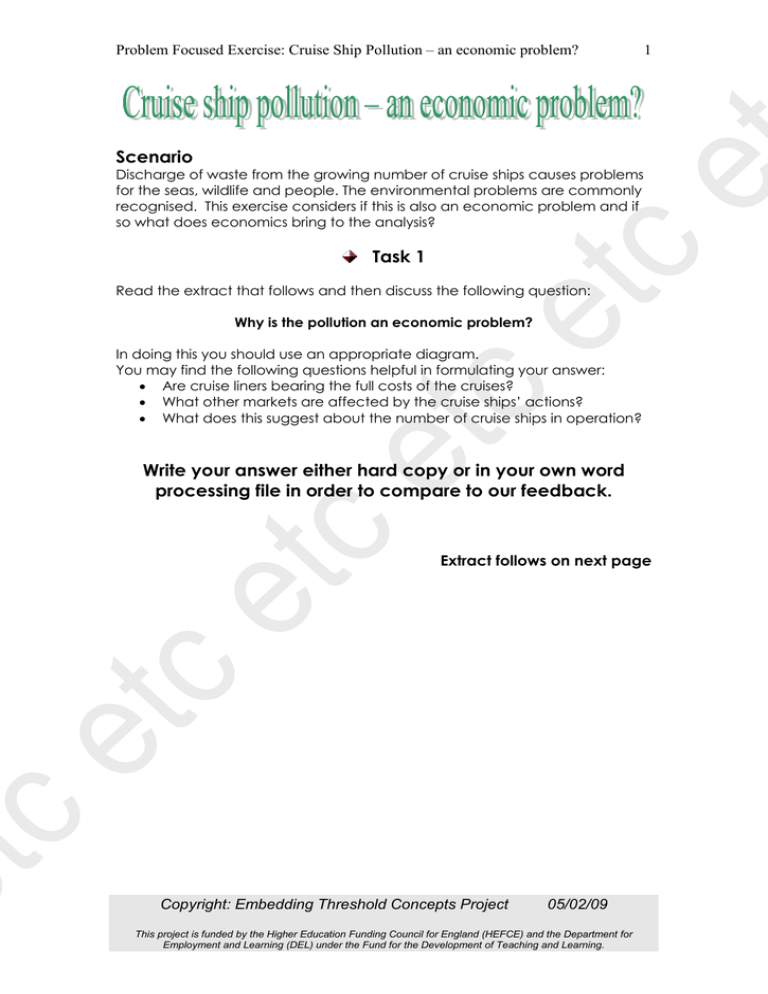
Problem Focused Exercise: Cruise Ship Pollution – an economic problem? 1 Scenario Discharge of waste from the growing number of cruise ships causes problems for the seas, wildlife and people. The environmental problems are commonly recognised. This exercise considers if this is also an economic problem and if so what does economics bring to the analysis? Task 1 Read the extract that follows and then discuss the following question: Why is the pollution an economic problem? In doing this you should use an appropriate diagram. You may find the following questions helpful in formulating your answer: Are cruise liners bearing the full costs of the cruises? What other markets are affected by the cruise ships’ actions? What does this suggest about the number of cruise ships in operation? Write your answer either hard copy or in your own word processing file in order to compare to our feedback. Extract follows on next page Copyright: Embedding Threshold Concepts Project 05/02/09 This project is funded by the Higher Education Funding Council for England (HEFCE) and the Department for Employment and Learning (DEL) under the Fund for the Development of Teaching and Learning. Problem Focused Exercise: Cruise Ship Pollution – an economic problem? 2 GROWTH OF HOLIDAY CRUISES DAMAGES ENVIRONMENT The extract here and in task 2 are based on: CRUISING FOR TROUBLE: STEMMING THE TIDE OF CRUISE SHIP POLLUTION, report prepared by Kira Schmidt, BLUEWATER NETWORK, March 2000 . The full report can be obtained from: http://bluewaternetwork.org/reports/rep_ss_cruise_trouble.pdf A report from the Bluewater Network has highlighted the severe environmental problems that arise from the sewage disposal from cruise ships. Sewage from ships is more concentrated than that produced on land as less water is used for sanitary purposes. Two problems are caused to the marine environment by the discharge: disease-causing micro-organisms can be spread and the excessive nutrients produced can promote algal growth. Releases of sewage close to shellfish beds can endanger public health because shellfish are filter feeders that concentrate pathogens in their tissues. Corals reefs are also harmed by sewageborne pathogens, causing disease and scarring in many species. The discharge from vessels can also be visually repulsive. This affects other users of the water, decreasing the use for contact sports, such as swimming, water skiing, snorkelling, scuba diving and surfing. The chemicals and deodorisers used in many marine sanitation devices are often harmful to aquatic life as they can contain chlorine, ammonia, or formaldehyde. The over-enrichment of nutrients, or eutrophication, also leads to grave problems. Excessive algal growth, promoted by nutrients such as nitrogen and phosphorous, consumes oxygen in the water and kills fish. It also smothers and kills coral reefs. It causes a loss of diversity among planktonic organisms and in sea floor species such as seaweeds, seagrasses, and corals. The former are the basis of the marine food cycle and a change can have a domino effect throughout the food web Feedback Copyright: Embedding Threshold Concepts Project 05/02/09 This project is funded by the Higher Education Funding Council for England (HEFCE) and the Department for Employment and Learning (DEL) under the Fund for the Development of Teaching and Learning.
